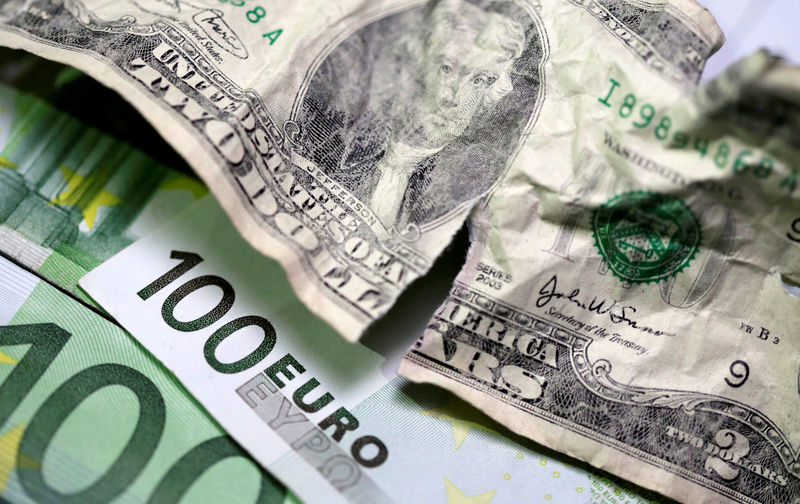
At 04:05 ET (08:05 GMT), the Dollar Index, which tracks the greenback against a basket of six other currencies, traded 0.2% lower to 104.095, not far removed from levels last seen at the end of July.
The dollar has been in demand as recent economic data has pointed to the US economy holding up reasonably well, suggesting that the Federal Reserve can be less aggressive in its easing than had previously been expected.
The Federal Reserve’s Beige Book, released Wednesday, said that economic activity was little changed since early September, while the labor market continued to show signs of strength.
The unchanged outlook on the economy comes amid a string of stronger economic data released recently, including the stronger September jobs report and retail sales.
Markets are currently pricing in just short of 50 basis points of cuts for the rest of the year, pointing to a likely cut of 25 bps in November.
Also helping the US currency is the proximity to the U.S. presidential election, as investors are also increasingly positioning ahead of the poll early next month.
“Volatility will probably rise into the 5 November election,” said analysts at ING, in a note, “and assuming that Donald Trump continues to perform well in the polls, the dollar should stay bid.”
In Europe, EUR/USD edged 0.2% higher to 1.0797, with traders digesting the latest economic activity data from the eurozone region.
The news remained grim, with the French composite PMI release falling to 47.3 in October from 48.6 in September, but the German data offered some hope, with the country’s composite PMI release rising to 48.4 in October, up from 47.5 the previous month and the expected 47.6.
While below 50, and thus still in contraction territory, the data pointed to an improvement in the region’s most important economy.
That said, the ECB has already cut rates three times this year from a record high, and further easing at each of its upcoming meetings this year looks likely.
“With inflation in abeyance and business confidence low, this is fertile ground for the ECB doves,” said ING. “We tentatively see something like a 1.0765-1.0850 EUR/USD range for the time being.”
GBP/USD rose 0.3% to 1.2961, bouncing after the pair dipped to a more than five-week low of in the previous session, ahead of the release of the October UK PMI data.
USD/JPY fell 0.4% to 152.19, slipping back slightly after climbing to a near three-month high in the prior session.
The yen saw some support after Japanese government officials warned against “one-sided” moves in currency markets, in light of recent weakness in the yen. Their comments spurred some fears of currency market intervention.
USD/CNY fell 0.2% to 7.1111, with the yuan recovering slightly from a near two-month high hit earlier this week, with the focus turning to an upcoming meeting of China’s National People’s Congress for more cues on fiscal spending.
To read the full article, Click Here
